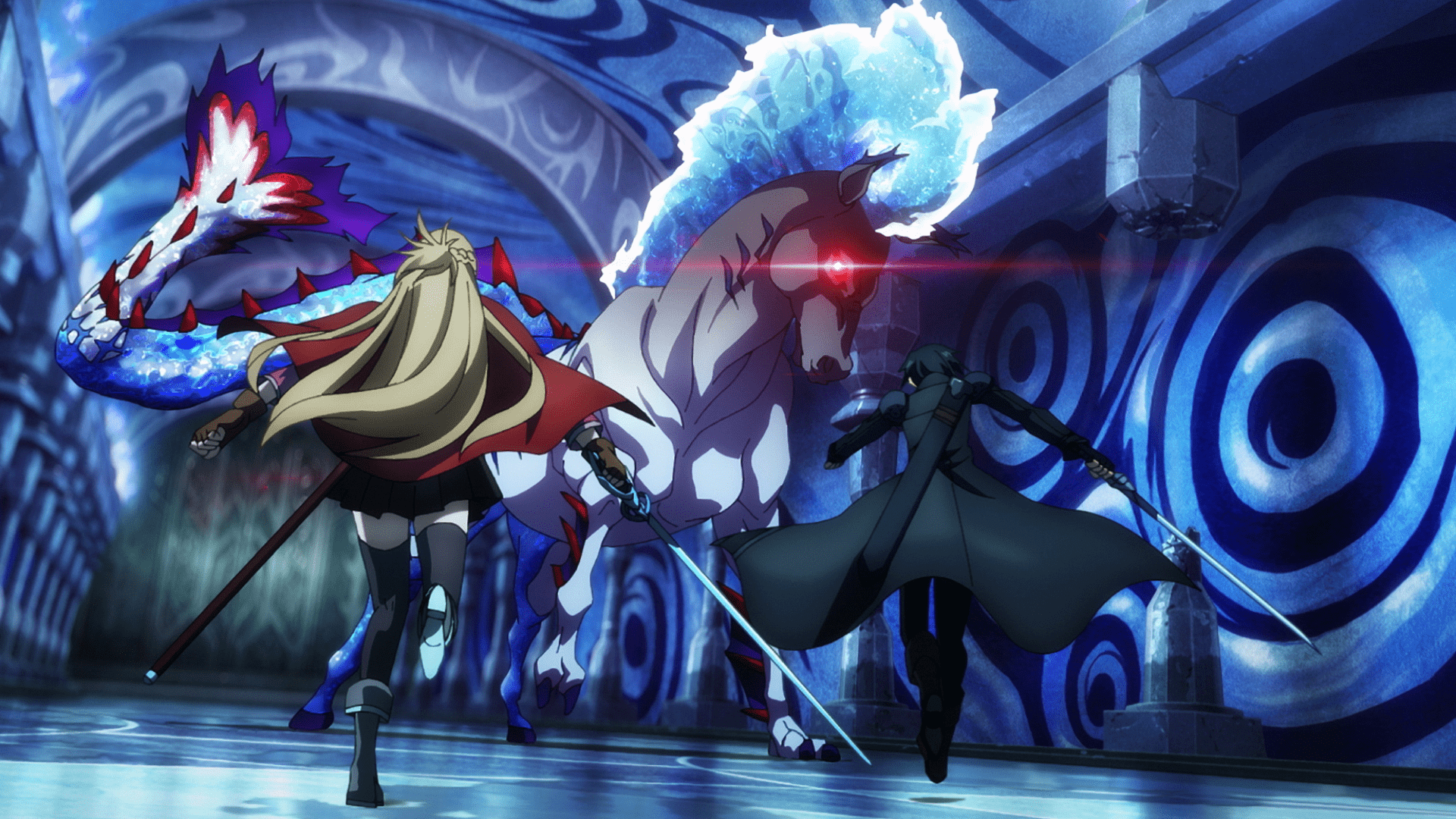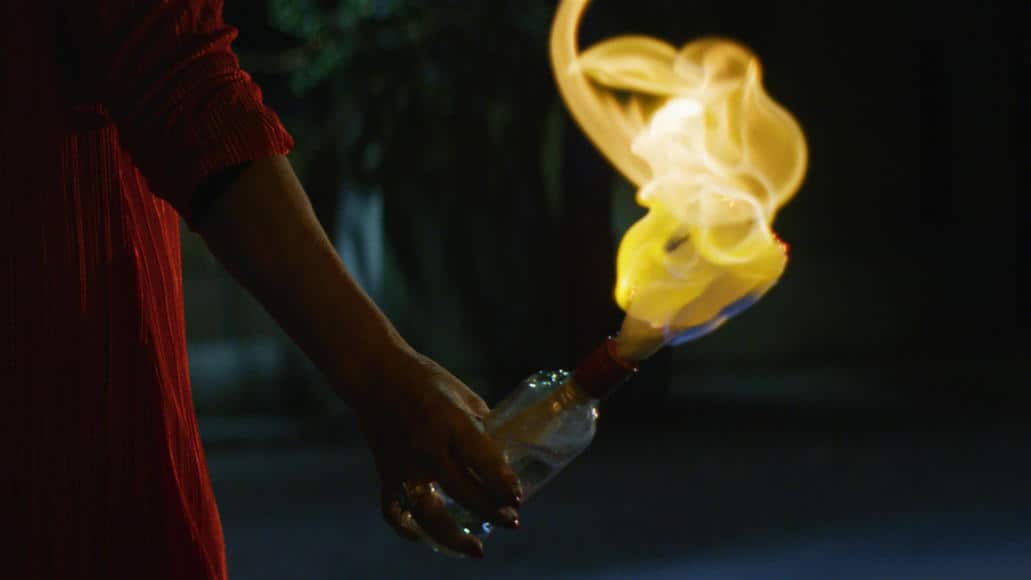The Film Department of the Tokyo University of Arts has a high-profile council consisting of the directors Nobuhiro Suwa (“Voices in the Wind”, 2020) and Akihito Shiota (“Harmful Insects”, 2001), the screenwriters Michiko Oishi (“Like Someone in Love”, 2012) and Yuji Sakamoto (“Monster”, 2023), and from the production sector Shoji Masui (“Talking the Pictures”, 2019) and Shozo Ichiyama (“Violent Cop”, 1989). Every year the department presents a body of work from its students. This year, nine students and three alumni (Masamichi Kawata, Satoru Hirohara, and Hiroshi Gokan) from the university created 11 silent films spanning from mysteries, thrillers, monsters, samurai tales, and animation, which were released under the title “Silent Movie”. On the occasion of Japan Society's Japan Cuts Film Festival, the audience gets the opportunity to see the next generation of filmmakers play with cinema's past. Because all films are narrated by a so-called benshi, a storyteller that dubs the moving images. Renowned benshi Ichiro Kataoka picks up the old tradition and mixes modern with forgotten tradition.
Silent Movie is screening at Japan Cuts

Connected by the reoccurring theme of relationships, most of the shorts broach the issue of love and human relationship. Starting with “Gentaro Isono – The Gamblers Embrace”, a classic black and white Edo chambara about a hero that dies for the sake of two forbidden lovers, the collection sets the right tone. Accompanied by traditional shamisen music, the movie creates the right environment for the benshi to tell his story.
Followed by a hard cut, the second film “Wandering in Shibuya” makes a good effort to transfer the storyteller in modern-day Tokyo and mocks the smartphone dating culture. In comparison, it is interesting to see the contrast of locations, which also gives a feeling of how versatile the use of a benshi can be. It works for all eras.
The dark theme of “The Voice that must be obeyed” steps out of line and shows a woman followed by a man. She has the ability to control people with her voice but is finally overpowered. She is dead, but the tongue lives on. Body horror meets neo-noir. This is clearly more of a genre flick and has creepy vibes.

“Dawn” is about a man who cannot forget his dead wife and therefore goes to the park to draw pictures of her. One day, the picture becomes alive and they are reunited again. Sadly the reunion is only short-lived. This makes a good couple with the following film “Slug”, which was my favorite short of all 11 films. Both use a mix of animation techniques that interfere with the real-life settings. In “Slug” this is pushed even further. The short tells the story of a couple that is in crisis. After 10 years the relationship is about to fall apart. One of the main reasons is the man's snorting. In an app on his phone, he sees a clinic that helps with snorting problems. As the man takes a closer look, he gets sucked into his phone and an animated psychedelic world. Colorful and mysterious between Twilight Zone and Videogame aesthetics, “Slug” makes borrowings from the Beatle's “Yellow Submarine”, the “Take on Me” music video by A-ha and convinces with a haunting organ score. Overall, the most promising part of the collection.
Smartphone and miscommunication is also part of the “I'll never let you go”. A young couple decides to reduce their communication only to their Chat-App. Again the woman is the strong character, turning down all of the man's efforts to change the relationship. The gender roles are another bounding aspect of many of these shorts, as the men tend to be submissive and dominated by the strong-minded female lead. In “Healing”, the gender roles are much more challenged by a same-sex couple. The travestite drama makes references to Hitchcock's Doppelganger's motive and plays with the thin line between love and hate.
Much lighter is “Ear and Away”. It is a comedic parable about a woman who leaves a ramen restaurant without paying the bill. She is traced by another customer and in the end, they have a somewhat romantic gathering at the same restaurant. The storytelling is very nice in this one and the wink at the end makes it a complete entertaining flick.
Next up is “Microwave Dad”. The funky title keeps its promise and tells us about a dying man who reincarnates in his son's microwave. The years pass by and the son's family lives together with the haunted cooking utensil until the family breaks apart. Dad and son stay back alone in the apartment and as the son finally dies, both live on as ghosts. The bizarre short has an innovative plot and nice effects. Also, the acting is outstanding and goes way behind the performance of the other short films. This conveys a heart-warming, in a way, typical Japanese drama.
Check also this interview
“The Great Monster Regalion” is a Godzilla-like story revolving around a young kid that is kept in a laboratory and is ultimately saved by his imagined monster friend. The storyline lacks a bit of background and therefore it is difficult to identify with the main character. However, this film changes the pace of the whole collection, because of the appearance of the monster. The shamisen music turns into more heavy rock and the audience already feels that the series draws to a close.
“The Tale of the Monster Rat” concludes “Silent Movie” and returns to the beginning by setting its plot back in the Edo times, where a man turns into a rat to avenge the death of his father. Falling back into the often-used black-and-white patterns, “The Tale of the Monster” does not really stand out from the series. The only remarkable thing is the coming back into full circle by having an Edo period setting and therefore delivering a proper punch line to finish off the 56 minutes of fresh material.
All in all, “Slug” has the best artistic concept with a consistent narrative and an exciting design. “Microwave Dad” is the weird, but worthy category winner, and “Wandering in Shibuya” wins in terms of critique of society. Looking at the use of the benshi, I am surprised by how good it works with most of the films. Sometimes it is confusing because it can be unclear if he expresses his own thoughts or the thoughts of the characters, but that may be rooted in the unusual experience of even having someone explain to you what is happening on screen. Therefore, Ichiro Kataoka's voice acting really makes this an outstanding screening and bridges a new generation of filmmakers with the old technique from the last century. In this spirit, one can only be excited about the future projects of these young directors and we may see which path they will take.















